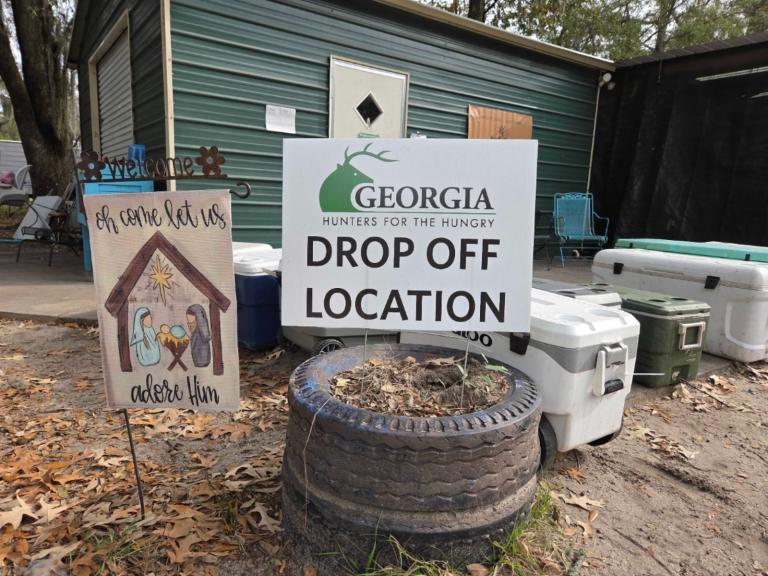
Photo by Amanda Tipton.
Last week, I wrote a post debunking the myth that the presence of Walmart and big box stores like it makes communities healthier. As I observed, this is a problem since working with such large corporations is key to the Obama administration’s plan to address the obesity epidemic. And now a new study has come along that makes the whole concept of using supermarkets of any size to combat food deserts and improve the diets of low-income Americans appear doomed to fail.
Published in the American Journal of Preventive Medicine, and performed by RAND researchers, the study looked at self-reported and parent-reported eating habits and body mass index (BMI) among kids in California and then compared it to the proximity of supermarkets, fast food restaurants, and convenience stores. Distressingly, it found “no robust relationship between food environment and consumption.”
This actually comes as no surprise to many experts, for this is not the first study to come to the conclusion that access to supermarkets doesn’t improve diet. Last summer, a large-scale study published in the Archives of Internal Medicine that looked at the diets of thousands of African-Americans from several cities failed to find a link between proximity to supermarkets and healthy eating.
Now there are some caveats here, as always. The RAND study used existing data from the California Health Interview Survey that relied on self-reports by adolescents and parent-reports for younger kids of both dietary intake and BMI. This kind of data is notoriously unreliable. Still, the fact that data supplied by kids and their parents demonstrate virtually no effect is disturbing to those who are banking on addressing obesity through improved access to healthy food.
The study authors speculate that access to transportation may have a greater effect on dietary habits than simple proximity to stores or fast food restaurants. Or perhaps it’s because, as this study found in 2006, the quality of the grocery store matters most for low-income residents — and low-income supermarkets are often of very low quality.
In fact, it turns out that data to support a pure supermarket-building policy is surprisingly thin. The RAND study authors observe that even the recent White House Task Force on Childhood Obesity enthusiastically endorsed using supermarkets in food deserts to address obesity — which led directly to the creation of the National Healthy Food Financing Initiative — without supplying much in the way of evidence. As they put it, the task force’s recommendation:
… was based on a single study that associated chain supermarkets in a postal ZIP code with lower body weight among adolescents. Yet earlier studies using very similar methods that reported null findings were not cited.
This sort of thing happens when data is cherry-picked, but it’s also the result of bias in policy circles and in the media (and even in academic journals) against what are called “null findings,” or studies that find no measurable effect. Ignoring such papers happens all the time — in fact, it’s the norm. It’s a natural tendency — when there’s nothing to see here, we do tend to just move along. But when someone claims to find something, we gather around and take note. Indeed, there is an entire psychology journal dedicated in solely to “null finding” papers simply because it’s so hard to get them published in traditional journals.
That said, concern about supermarket chains abandoning low-income urban cores goes back decades, and no one should suggest that these neighborhoods don’t deserve the current concerted effort by government and nonprofits to address the problem.
But even the best supermarkets are stuffed with processed foods, snacks, and soda. So it’s fair to say that the Obama administration’s supermarket-building policy is an urban planning program that’s been re-purposed as an anti-obesity program, without a real, hard look at what goes on inside a supermarket. Perhaps it’s time for policymakers to do just that — and they may as well start with this latest study, null findings or not.
Politics is all about the “art of the possible.” And it’s that, more than a rigorous examination of the science, which has brought supermarket proliferation to the fore. Rather than regulating what can be sold or restricting what can’t, the Obama administration recognizes that it’s far easier to partner with corporations like Walmart to build supermarkets in areas lacking them than it is to invest time and effort fighting for the much more controversial policies — like zoning laws, sugar taxes, or veggie subsidies — that might actually alter people’s eating habits.
What’s disconcerting is that, with many in the food industry and on the political right so skeptical of the whole anti-obesity enterprise, the emphasis on a flawed policy may undermine the government’s other anti-obesity efforts. Before it’s too late, we need to start paying closer attention to what research isn’t finding on the subject of food deserts rather than clinging too tightly to what we hope it is finding.




